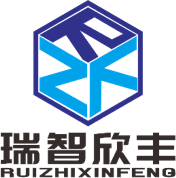Circuit Exposure Ink Exposure LDI exposure speed
In the production process of Printed Circuit Boards (PCBs), exposure is a crucial step. Many PCB manufacturers use CCD semi-automatic exposure machines for this process, but Shenzhen Rich Full Joy Electronics Co., Ltd. has introduced LDI direct imaging exposure machines, a technology that offers numerous advantages. However, LDI exposure speed is relatively slow. This article provides an in-depth analysis of the reasons behind the slower LDI exposure speed and compares it with traditional CCD exposure machines.

- Overview of the PCB Manufacturing Process
This section describes the key steps in PCB manufacturing, with a focus on the role of the exposure process in the entire workflow. It highlights the significance of exposure in ensuring line accuracy and overall product quality.
- Detailed Analysis of the Traditional CCD Exposure Process
This section introduces the working principles of CCD exposure machines, including the light source, film production, and alignment systems. It discusses the advantages of the CCD process, such as a well-established technical system, stable production efficiency, and broad market adoption. Additionally, the limitations of the CCD process, particularly in high-precision and multi-layer boards, are explored.
- LDI Technology Principles and Operational Process
This section delves into the core technology of LDI (Laser Direct Imaging):
- Laser Imaging Principles: A detailed discussion on how laser beams image patterns onto the resist layer, covering aspects like wavelength, beam focusing, and the generation of exposure paths.
- Resist Selection and Compatibility: An analysis of how different resists affect exposure outcomes in LDI processes, along with an introduction to high-sensitivity resists suited for LDI.
- Automatic Alignment System: How LDI achieves high-precision imaging through automatic alignment systems, especially in multi-layer board production.
- Technical Comparison Between LDI and CCD Processes and Application Scenarios
A comprehensive comparison of both processes across several technical parameters:
- Imaging Precision: LDI offers more precise imaging by directly imaging with lasers, thereby reducing alignment errors caused by film, whereas CCD relies on optical alignment, which carries some risk of deviation.
- Production Efficiency: While CCD exposure is faster and suitable for large-scale production, LDI performs better in sample making and high-precision products.
- Ease of Operation and Automation: LDI eliminates the need for film production and alignment adjustments, reducing human error.
This section also provides a detailed discussion of the suitability of each process for different product types (e.g., HDI, high-layer count boards, rigid-flex boards) and offers real-world case studies analyzing the decision-making process for choosing LDI or CCD.
- In-Depth Analysis of the Reasons Behind Slower LDI Exposure Speeds
This section explores the fundamental reasons for the slower LDI exposure speed across several dimensions:
- Light Source Design and Energy Density: The relationship between laser energy transfer and resist response speed, and how to optimize exposure speed without compromising imaging quality.
- Laser Modulation and Data Processing Speed: An in-depth analysis of how laser modulation frequency and data transmission rate impact exposure speed, particularly under high-resolution demands.
- Mechanical System and Motion Control: How factors like the control of PCB movement paths during exposure, including acceleration and deceleration smoothness, and positioning accuracy affect production efficiency.
- Analysis of Product Yield Improvements After Implementing LDI Technology
A detailed discussion of the advantages LDI brings in improving PCB product yields:
- Effective Control of Alignment Errors: LDI significantly reduces alignment errors that are common with traditional CCD processes due to film mismatch by precisely controlling laser paths.
- Advantages in High-Density Circuit Board Manufacturing: An analysis of LDI’s benefits in producing ultra-fine line widths, small spacing, and high-layer count boards, particularly in HDI applications.
- Defect Detection and Feedback Mechanism: How LDI reduces common circuit defects such as shorts, opens, and broken lines, thereby improving final product yield.

- Economic Benefits and Production Suitability of the LDI Process
This section analyzes the overall economic efficiency of adopting LDI in terms of production efficiency, cost control, and delivery management:
- Cost Control: While LDI equipment costs are higher, savings can be achieved by reducing film production costs, increasing yields, and lowering rework rates.
- Delivery Management: The speed advantages of LDI in sample production, and its flexibility in handling small-batch, diverse orders.
- Return on Investment (ROI) Analysis: Real-world case studies showing the ROI timeline and economic benefits after implementing LDI equipment.
- LDI Technology Performance in Various Market Applications and Future Development Trends
This section explores the application of LDI in different markets, such as automotive electronics, consumer electronics, medical devices, and 5G communication equipment. It also predicts future developments in LDI technology, such as more efficient lasers, smarter data processing systems, and fully automated production lines.
- Case Studies: Achievements After Adopting LDI Technology
This section presents specific enterprise case studies showing significant improvements in product quality, production efficiency, and customer satisfaction after implementing LDI technology. It also discusses the challenges faced during implementation and solutions, such as equipment commissioning, process optimization, and team training.
- Conclusion and Outlook: The Future Prospects and Market Potential of LDI Processes
This section summarizes the unique advantages of LDI technology in PCB manufacturing and offers insights into its future market potential. It also highlights the key factors companies need to consider when choosing an exposure process, such as production requirements, budget, and market positioning.










